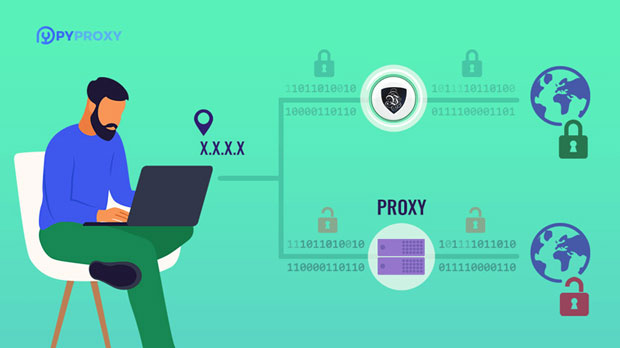What is Socks5 proxy server and how is it different from other proxies?
socks5 proxy servers are specialized tools used to route internet traffic between a client and a server, allowing users to conceal their real IP address while maintaining privacy and security. Unlike other proxy types, SOCKS5 works at a lower level of the network stack, providing flexibility for various types of internet traffic such as HTTP, FTP, or P2P. It enables users to bypass regional restrictions, access geo-blocked content, and protect their anonymity online. In this article, we will explore the concept of socks5 proxies in-depth and compare them with other commonly used proxies to highlight their unique features and advantages. Understanding socks5 proxy serversA SOCKS5 proxy server is an advanced version of the SOCKS (Socket Secure) protocol, designed to handle a wide range of internet traffic. SOCKS is a protocol that operates at the transport layer (Layer 4) of the OSI model, allowing it to relay data between a client and a server. SOCKS5 is the latest and most secure iteration of this protocol, offering enhanced performance and additional features that make it suitable for more complex use cases.In a typical SOCKS5 proxy setup, the client sends its traffic to the SOCKS5 server, which then forwards the traffic to the destination server. This process effectively masks the client’s real IP address, making it more difficult for third parties to track their online activities. SOCKS5 also supports a variety of authentication methods, adding an extra layer of security.Key Features of SOCKS5 ProxiesThere are several key features that distinguish SOCKS5 proxies from other types of proxies:1. Protocol Flexibility: SOCKS5 can handle almost any type of internet traffic, including HTTP, HTTPS, FTP, and even peer-to-peer (P2P) protocols like BitTorrent. This makes it a versatile solution for a variety of use cases, from web browsing to file sharing and streaming.2. Authentication Support: One of the key benefits of SOCKS5 is its ability to support various authentication methods. Unlike other proxies that may allow anonymous connections, SOCKS5 can require users to authenticate themselves before using the proxy server. This adds an extra layer of security and ensures that only authorized users can access the service.3. No Data Alteration: SOCKS5 proxies do not alter the data being transmitted, which means there is no modification to the content, headers, or protocols of the data packets. This contrasts with HTTP proxies, which may modify data to optimize the browsing experience.4. Improved Performance: Since SOCKS5 proxies operate at a lower level in the network stack, they tend to offer better performance compared to HTTP or HTTPS proxies. This is especially true for high-bandwidth activities like streaming or gaming, where latency and speed are critical.5. Support for IPv6: SOCKS5 fully supports IPv6, allowing users to work with both IPv4 and IPv6 addresses seamlessly. This is particularly important as the internet transitions to IPv6 and more devices begin using it.How SOCKS5 Differs from Other Proxy TypesThere are several other proxy types, such as HTTP proxies, HTTPS proxies, and even older versions of SOCKS (SOCKS4), each with its own specific use cases. Here is a detailed comparison of SOCKS5 with these other proxies:SOCKS5 vs HTTP ProxyThe primary difference between SOCKS5 and HTTP proxies is their scope of use. HTTP proxies are designed specifically to handle HTTP and HTTPS traffic, meaning they are optimized for web browsing. However, they cannot handle other types of traffic like FTP or P2P.In contrast, SOCKS5 proxies are not limited to HTTP/HTTPS traffic. They can handle any type of internet traffic, making them a more flexible solution. While HTTP proxies can be fast and efficient for browsing, they may not be suitable for tasks that involve non-HTTP traffic, such as file transfers or online gaming.Another important distinction is that HTTP proxies tend to modify the data being transmitted (e.g., caching or compressing content), which can sometimes cause issues with certain websites or applications. SOCKS5, on the other hand, does not alter the data, ensuring a smoother experience for all types of internet usage.SOCKS5 vs HTTPS ProxyHTTPS proxies are essentially a secure version of HTTP proxies. They encrypt the data transmitted between the client and the proxy server, which provides additional privacy and security for web browsing. However, like HTTP proxies, HTTPS proxies are limited to HTTP/HTTPS traffic and cannot handle other protocols.While HTTPS proxies are useful for protecting web traffic from eavesdropping, they do not provide the same level of versatility and performance as SOCKS5 proxies. SOCKS5 proxies can handle all types of internet traffic, including encrypted HTTPS traffic, and are better suited for tasks like file sharing or accessing geo-restricted content.SOCKS5 vs SOCKS4 ProxySOCKS5 is the latest version of the SOCKS protocol, offering several improvements over SOCKS4. The most significant difference is that SOCKS5 supports authentication, while SOCKS4 does not. This makes SOCKS5 more secure, as it ensures that only authorized users can connect to the proxy server.SOCKS5 also supports IPv6, whereas SOCKS4 is limited to IPv4 addresses. This future-proofing feature ensures that SOCKS5 can handle the increasing demand for IPv6 addresses, making it more scalable in the long run.Furthermore, SOCKS5 offers better performance and reliability, particularly for tasks like gaming, streaming, or accessing high-bandwidth websites. SOCKS4 is generally considered outdated and is rarely used in modern internet applications.Advantages of Using SOCKS5 Proxy Servers1. Privacy and Anonymity: SOCKS5 proxies provide a high level of anonymity by masking the user’s real IP address. This makes it harder for websites, advertisers, or hackers to track the user’s online activities.2. Bypassing Geo-Restrictions: Many users rely on SOCKS5 proxies to bypass regional restrictions and access content that is blocked in their location. By routing traffic through a SOCKS5 server located in a different country, users can appear as if they are browsing from that region, thus gaining access to geo-blocked content like streaming services, websites, and social media platforms.3. Improved Security: SOCKS5 supports various encryption methods, making it a secure solution for protecting online activities. This is especially important for users engaging in activities like torrenting or file sharing, where anonymity and security are paramount.4. Versatility: Since SOCKS5 proxies can handle all types of traffic, they are ideal for users who require a multi-purpose solution. Whether you're browsing the web, playing online games, streaming content, or downloading large files, SOCKS5 provides a reliable and fast proxy service.5. Better Performance for High-Bandwidth Activities: SOCKS5 proxies are designed to offer low latency and high performance, which makes them ideal for activities that require high bandwidth, such as online gaming, streaming, or large file downloads.ConclusionIn conclusion, SOCKS5 proxy servers offer a range of advantages over other types of proxies, thanks to their versatility, security features, and support for a variety of internet traffic. While other proxies like HTTP and HTTPS are useful for specific tasks, SOCKS5’s ability to handle all types of traffic, combined with its improved performance and security features, make it a superior choice for many users. Whether you're looking to enhance your privacy, bypass geo-restrictions, or improve your online experience, SOCKS5 offers a reliable and effective solution for modern internet needs.
2024-12-23

























































